Related Research Articles
Feminist film theory is a theoretical film criticism derived from feminist politics and feminist theory influenced by second-wave feminism and brought about around the 1970s in the United States. With the advancements in film throughout the years feminist film theory has developed and changed to analyse the current ways of film and also go back to analyse films past. Feminists have many approaches to cinema analysis, regarding the film elements analyzed and their theoretical underpinnings.
Feminism is a range of socio-political movements and ideologies that aim to define and establish the political, economic, personal, and social equality of the sexes. Feminism holds the position that societies prioritize the male point of view and that women are treated unjustly in these societies. Efforts to change this include fighting against gender stereotypes and improving educational, professional, and interpersonal opportunities and outcomes for women.

Laura Mulvey is a British feminist film theorist and filmmaker. She was educated at St Hilda's College, Oxford. She is currently professor of film and media studies at Birkbeck, University of London. She previously taught at Bulmershe College, the London College of Printing, the University of East Anglia, and the British Film Institute.

Ousmane Sembène, often credited in the French style as Sembène Ousmane which he seemed to favor as a way to underscore the "colonial imposition" of this naming ritual and subvert it, was a Senegalese film director, producer and writer. The Los Angeles Times considered him one of the greatest authors of Africa and he has often been called the "father of African film". Descended from a Serer family through his mother from the line of Matar Sène, Ousmane Sembène was particularly drawn to Serer religious festivals especially the Tuur festival.

Cinema of Africa covers both the history and present of the making or screening of films on the African continent, and also refers to the persons involved in this form of audiovisual culture. It dates back to the early 20th century, when film reels were the primary cinematic technology in use. During the colonial era, African life was shown only by the work of white, colonial, Western filmmakers, who depicted Africans in a negative fashion, as exotic "others". As there are more than 50 countries with audiovisual traditions, there is no one single 'African cinema'. Both historically and culturally, there are major regional differences between North African and sub-Saharan cinemas, and between the cinemas of different countries.
Women's cinema primarily describes cinematic works directed by women filmmakers. The works themselves do not have to be stories specifically about women and the target audience can be varied.

Sarah Maldoror was a French filmmaker of French West Indies descent. She is best known for her feature film Sambizanga (1972) on the 1961–1974 war in Angola.

Moolaadé is a 2004 film by the Senegalese writer and director Ousmane Sembène. It addresses the subject of female genital mutilation, a common practice in a number of African countries, from Egypt to Nigeria. The film was a co-production between companies from several Francophone nations: Senegal, France, Burkina Faso, Cameroon, Morocco, and Tunisia. It was filmed in the remote village of Djerrisso, Burkina Faso. The film argues strongly against the practice, depicting a village woman, Collé, who uses moolaadé to protect her daughter and a group of younger girls. She is opposed by the villagers who believe in the necessity of female genital cutting, which they call "purification". This was Sembène's last film before his death in 2007.
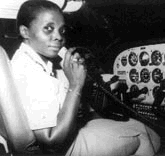
Thérèse Sita-Bella, born Thérèse Bella Mbida, was a Cameroonian film director who became the first woman filmmaker of Africa and Cameroon.
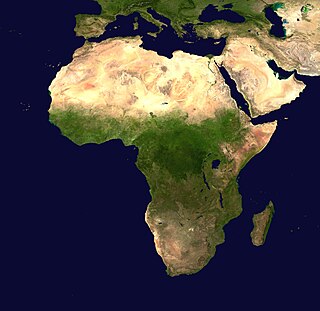
African feminism includes theories and movements which specifically address the experiences and needs of continental African women. From a western perspective, these theories and movements fall under the umbrella label of Feminism, but it is important to note that many branches of African "feminism" actually resist this categorization. African women have been engaged in gender struggle since long before the existence of the western-inspired label "African feminism," and this history is often neglected. Despite this caveat, this page will use the term feminism with regard to African theories and movements in order to fit into a relevant network of existing Wikipedia pages on global feminism. Because Africa is not a monolith, no single feminist theory or movement reflects the entire range of experiences African women have. African feminist theories are sometimes aligned, in dialogue, or in conflict with Black Feminism or African womanism. This page covers general principles of African feminism, several distinct theories, and a few examples of feminist movements and theories in various African countries.
Sambizanga is a 1972 film directed by Sarah Maldoror and written by Maldoror, Mário Pinto de Andrade, and Maurice Pons, based on the 1961 novella The Real Life of Domingos Xavier by José Luandino Vieira. Set in 1961 during the onset of the Angolan War of Independence, it follows the struggles of Angolan militants involved with the Popular Movement for the Liberation of Angola (MPLA), an anti-colonial political movement. Maldoror co-wrote the screenplay with her husband, who was a leader within the MPLA. Sambizanga was the first feature film produced by a Lusophone African country.
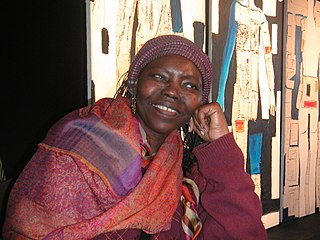
Safi Faye was a Senegalese film director and ethnologist. She was the first Sub-Saharan African woman to direct a commercially distributed feature film, Kaddu Beykat, which was released in 1975. She has directed several documentary and fiction films focusing on rural life in Senegal.
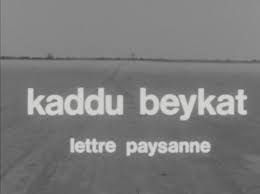
Kaddu Beykat is a 1975 Senegalese film directed by Safi Faye. It was the first feature film made by a Black African woman to be commercially distributed and brought international recognition for its director. Centred on a romance, it chronicles the daily lives of people in a rural Senegalese village.
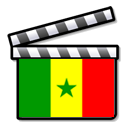
The cinema of Senegal is a relatively small film industry which experienced its prime from the 1960s through to the early 1980s, but has since declined to less than five feature films produced in the last ten years. Senegal is the capital of African cinema and the most important place of African film production after its independence from France in 1960.

Senegalese literature is written or literary work which has been produced by writers born in the West African state. Senegalese literary works are mostly written in French, the language of the colonial administration. However, there are many instances of works being written in Arabic and the native languages of Wolof, Pulaar, Mandinka, Diola, Soninke and Serer. Oral traditions, in the form of Griot storytellers, constitute a historical element of the Senegalese canon and have persisted as cultural custodians throughout the nation’s history. A form of proto-Senegalese literature arose during the mid 19th century with the works of David Abbé Boilat, who produced written ethnographic literature which supported French Colonial rule. This genre of Senegalese literature continued to expand during the 1920s with the works of Bakary Diallo and Ahmadou Mapaté Diagne. Earlier literary examples exist in the form of Qur’anic texts which led to the growth of a form African linguistic expressionism using the Arabic alphabet, known as Ajami. Poets of this genre include Ahmad Ayan Sih and Dhu al-nun.
Sarah Maldoror ou la nostalgie de l'utopie is a Togolese short documentary film directed by Anne-Laure Folly. It was released in 1999.
Hip hop feminism is a sub-set of black feminism that centers on intersectional subject positions involving race and gender in a way that acknowledges the contradictions in being a black feminist, such as black women's enjoyment in hip hop music and culture, rather than simply focusing on the victimization of black women in hip hop culture due to interlocking systems of oppressions involving race, class, and gender.
Norma Bailey is a Canadian film writer, producer, and director whose work is rooted in feminist and intersectional film theory. Bailey has directed several films, both in English and French and in various different genres, including fiction and non-fiction films. Her prolific career within the film industry has awarded her various awards and professional accolades including being named to the Order of Manitoba in 2010.

In feminist theory, the male gaze is the act of depicting women and the world in the visual arts and in literature from a masculine, heterosexual perspective that presents and represents women as sexual objects for the pleasure of the heterosexual male viewer. In the visual and aesthetic presentations of narrative cinema, the male gaze has three perspectives: that of the man behind the camera, that of the male characters within the film's cinematic representations; and that of the spectator gazing at the image.
African Film Festival, Inc. (AFF) is a non-profit cultural organization that presents an annual film festival and year-round community programs. Based in New York City, the organization was founded in 1990. The organization is dedicated to promoting greater understanding of African culture through film.
References
- ↑ Hayward, Susan. "Third World Cinemas: African Continent" in Cinema Studies: The Key Concepts (Third Edition). Routledge, 2006. p. 426-442
- 1 2 3 4 Ellerson, Beti (2015). "African Women in Cinema". Gaze Regimes. Wits University Press. pp. 1–9. ISBN 978-1-86814-856-1. JSTOR 10.18772/22015068561.6.
- ↑ "Little Known Black History Fact: World Festival Of Black Arts". Black America Web. 2019-04-01. Retrieved 2019-12-16.
- 1 2 3 4 5 Ukadike, N. Frank (1994). "Reclaiming Images of Women in Films from Africa and the Black Diaspora". Frontiers: A Journal of Women Studies. 15 (1): 102–122. doi:10.2307/3346615. JSTOR 3346615.
- 1 2 Dangarembga, Tsitsi (29 April 2019). "OPINIONISTA: Double bind: Women film makers in Africa are edited too soon". Daily Maverick. Retrieved 2019-12-16.
- ↑ Schmidt, Nancy J. (26 April 1997). "Sub-Saharan African Women Filmmakers: Agendas for Research with a Filmography". Matatu. 19 (1): 163–190. doi:10.1163/18757421-90000264.
- ↑ Vourlias, Christopher (2019-02-07). "Female Filmmakers in Africa Take Control of Their Careers". Variety. Retrieved 2019-12-16.
- ↑ "MISSION STATEMENT | LETTRE DE MISSION". African Women in Cinema. Retrieved 2019-12-14.
- ↑ Williams, James S. (2019-03-21). Ethics and Aesthetics in Contemporary African Cinema: The Politics of Beauty. Bloomsbury Publishing. ISBN 978-1-350-10506-5.
- 1 2 Tcheuyap, Alexie (January 2011). "A frican C inema(s): Definitions, Identity and Theoretical Considerations". Critical Interventions. 5 (1): 10–26. doi: 10.1080/19301944.2011.10781397 . S2CID 193267410.
- 1 2 3 Riesco, Beatriz Leal. "The woman in Contemporary African Cinema: Protagonism and Representation | BUALA". Buala.org. Retrieved 2019-12-17.
- ↑ Halhoul, Khalid. "Using African Cinema to Shift Cultural Perceptions". Utne.
- ↑ Barlet, Olivier (2012). "The Ambivalence of French Funding". Black Camera. 3 (2): 205–216. doi:10.2979/blackcamera.3.2.205. JSTOR 10.2979/blackcamera.3.2.205. S2CID 143881053.
- ↑ Diawara, Manthia (1992). African Cinema: Politics and Culture. Bloomington, Indiana: Indiana University Press, pp. 22–23.
- 1 2 Harrow, Kenneth W. (1999). African Cinema: Postcolonial and Feminist Readings. Africa World Press. pp. xiv. ISBN 978-0-86543-697-8.
- ↑ Petty, Sheila (1 October 2012). "Aesthetic and narrative strategies in the films of selected African women directors". Journal of African Cinemas. 4 (2): 145–155. doi:10.1386/jac.4.2.145_1.
- ↑ "La PASSANTE (1972)". BFI. Archived from the original on April 27, 2018. Retrieved 2019-12-17.
- ↑ Armes, Roy (2006). African Filmmaking: North and South of the Sahara. Indiana University Press. p. 177. ISBN 978-0-253-34853-1.
- ↑ Beti Ellerson, "African through a Woman's Eyes: Safi Faye's Cinema" in Focus on African Cinema(ed) Francoise Pfaff, (Bloomington: Indiana University, 2004), 185
- ↑ Mh, Martin; o (2000-07-18). "Approaches to African Cinema Study". Senses of Cinema. Retrieved 2019-12-17.
- ↑ The Women’s Companion to International Film by Annette Kuhn and Susannah Radstone. University of California Press, 1990, pp. 85
- 1 2 Schuhmann, Antje; Mistry, Jyoti (2015). "Puk Nini – A Filmic Instruction in Seduction". Gaze Regimes. Wits University Press. pp. 81–96. ISBN 978-1-86814-856-1. JSTOR 10.18772/22015068561.12.
- ↑ "Meet The Filmmaker Reinventing How African Women Are Portrayed In Movies". NPR.org. Retrieved 2019-12-17.
- ↑ Diang’a, Rachael (1 January 2017). "Themes in Kenyan cinema: Seasons and reasons". Cogent Arts & Humanities. 4 (1): 1334375. doi: 10.1080/23311983.2017.1334375 .
- 1 2 Harrow, Kenneth W. (1997). With Open Eyes: Women and African Cinema. Rodopi. ISBN 978-90-420-0143-5.
- ↑ Chikafa-Chipiro, Rosemary (1 December 2017). "The representation of African womanhood in Sembene's Moolaade: An Africana womanist reading". Journal of African Cinemas. 9 (2): 243–258. doi:10.1386/jac.9.2-3.243_1.
- 1 2 3 "African women filmmakers break down barriers and challenge taboos". Deutsche Welle . August 3, 2018. Retrieved 2019-12-17.
- ↑ “Lucy Gebre-Egziabher, Ethiopia.” In Sisters of the Screen. Women of Africa on Film, Video and Television, 109–24. Trenton, NJ; Asmara, Eritrea: Africa World Press, Inc., 2000.
- ↑ “Wanjiru Kinyanjui, Kenya.” In Sisters of the Screen. Women of Africa on Film, Video and Television, 146–57. Trenton, NJ; Asmara, Eritrea: Africa World Press, Inc., 2000.